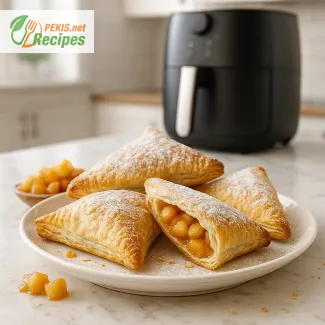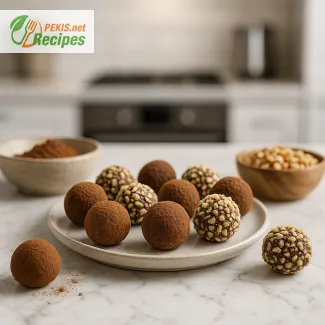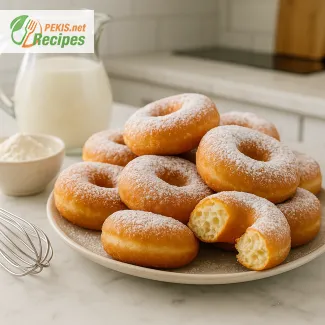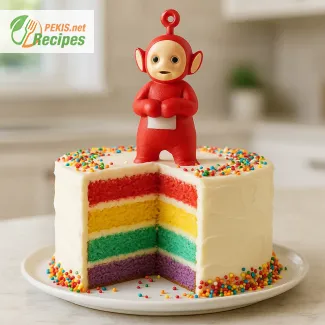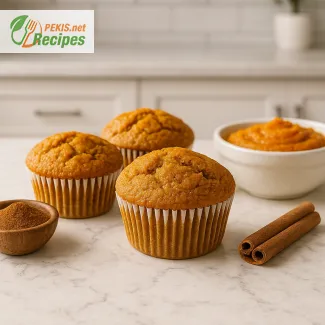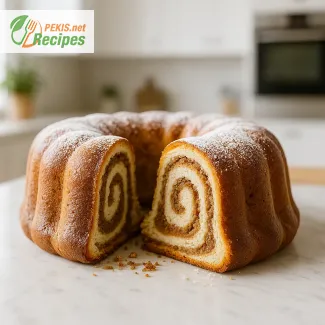
A moist and fluffy gluten-free white cake everyone will love
Discover the ultimate celebration cake for gluten-free baking
When it comes to creating a truly memorable dessert, few things are as timeless and versatile as a white cake. Whether you're celebrating a birthday, anniversary, wedding, or simply gathering with friends for coffee, a beautifully baked gluten-free white cake can turn any moment into a special occasion. This isn't just any white cake — it’s a gluten-free masterpiece that delivers all the softness, light texture, and vanilla richness you’d expect from a traditional recipe, without any compromise in flavor or structure.
Crafting the perfect white cake without gluten used to be a challenge, often leading to dry, crumbly textures and muted flavors. But this modern recipe is engineered with care to give you a fluffy, tender crumb that holds its shape yet melts on the tongue. The secret lies in the balance of gluten-free flour blends, a carefully calibrated ratio of moisture-rich ingredients, and an approach that respects the delicate nature of alternative baking.
What makes this cake truly exceptional is its ability to replicate the classic texture of a traditional white cake while remaining completely gluten-free. It’s not just a substitute — it’s an improvement. With the right ingredients and method, gluten-free baking can rise above expectations, delivering taste and texture that rival any wheat-based confection. This recipe has been designed to impress even the most discerning guests, including those who may not follow a gluten-free diet themselves.
The taste profile is clean and elegant: subtle notes of pure vanilla, a hint of sweet cream, and a perfectly balanced sweetness that pairs beautifully with your choice of frostings and fillings. From classic buttercream and whipped cream toppings to fresh berries, lemon curd, or coconut flakes, this cake serves as a versatile canvas for all your decorating dreams.
Ideal for birthdays, weddings, and everyday indulgence
This easy gluten-free white cake recipe is perfect for both novice and experienced bakers. You don’t need any specialized baking experience to achieve professional-quality results. With straightforward steps, accessible ingredients, and consistently dependable results, it’s a reliable go-to for any special event. The simplicity of this cake also makes it perfect for customizing — add food coloring for themed parties, bake it in layers for a tiered celebration cake, or keep it simple with a dusting of powdered sugar for a more understated dessert.
Thanks to its neutral flavor profile, this cake also works wonderfully with various dietary needs. Whether you’re serving guests with gluten intolerance or simply seeking a lighter dessert option, this cake fits the bill without sacrificing satisfaction. Plus, its adaptability makes it ideal for creating mini cupcakes, layered trifles, or sculpted novelty cakes that hold up beautifully with a variety of fillings.
Why this gluten-free white cake stands out
The recipe you’re about to explore is crafted for consistency, reliability, and exquisite taste. Many gluten-free cakes fall into the trap of being too dense or overly dry, but this one strikes a perfect balance between airiness and structure. You’ll find it moist enough to satisfy on its own, yet sturdy enough to be layered, carved, or frosted with confidence. Its light crumb doesn’t overwhelm the palate, making it the perfect companion to both rich chocolate ganache and delicate fruit purées.
Furthermore, this cake is made using ingredients you can find at most grocery stores. From gluten-free flour blends to common pantry staples like sugar, eggs, and plant-based milk alternatives, the recipe keeps things practical while ensuring an elevated final product. It’s perfect for last-minute celebrations or carefully planned dessert tables, offering both elegance and convenience.
A recipe you’ll return to again and again
There’s a reason why gluten-free white cakes are climbing in popularity — more home bakers are seeking recipes that combine dietary awareness with gourmet-level flavor. This cake delivers both. Once you try it, it’s likely to become a staple in your repertoire, whether you’re baking for someone with gluten sensitivity or simply looking to expand your dessert offerings. Its aesthetic beauty, adaptability, and crowd-pleasing flavor make it a standout among gluten-free options.
Whether you serve it naked, frosted, or decorated to the nines, this easy gluten-free white cake will quickly become a favorite in your kitchen. From birthdays to bridal showers, and everything in between, it’s the kind of recipe that ensures every celebration has a delicious and memorable centerpiece.
1. Preheat the oven and prepare cake pans
Preheat the oven to 175°C (350°F). Grease two 20 cm (8-inch) round cake pans and line the bottoms with parchment paper. Lightly flour the sides using gluten-free flour.
2. Cream the butter and sugar
In a large mixing bowl, beat the unsalted butter (170 g / 6 oz) and granulated sugar (300 g / 1 ½ cups) together until light and fluffy, about 3–4 minutes, using a hand mixer or stand mixer on medium speed.
3. Add egg whites and vanilla
Add the egg whites (5) gradually, beating well after each addition. Then mix in the vanilla extract (10 ml / 2 tsp) until fully combined.
4. Combine dry ingredients
In a separate bowl, whisk together the gluten-free all-purpose flour blend (300 g / 2 ½ cups), baking powder (12 g / 1 tbsp), and salt (2 g / ½ tsp).
5. Alternate dry and wet ingredients
To the creamed butter mixture, add the dry ingredients in three parts, alternating with the whole milk (240 ml / 1 cup) and sour cream (120 ml / ½ cup), beginning and ending with the dry ingredients. Mix until just combined. Do not overmix.
6. Bake the cake
Divide the batter evenly between the prepared cake pans. Bake for 30–35 minutes, or until a toothpick inserted into the center comes out clean.
7. Cool and assemble
Let the cakes cool in the pans for 10 minutes, then turn out onto wire racks to cool completely before frosting or serving.
Elevating Your Gluten-Free White Cake: Expert Tips for a Superior Bake
Proven techniques to enhance taste, texture, and nutritional value
The classic gluten-free white cake is a beloved favorite for celebrations, but with a few intentional adjustments, it can be transformed into something truly extraordinary. Whether you’re looking to boost flavor, improve structure, or make the recipe more health-conscious, there are numerous techniques that elevate a standard gluten-free white cake into a memorable culinary experience. Home bakers have the unique advantage of control—over ingredients, freshness, and preparation style—which results in a final product that often surpasses any store-bought option in both quality and flavor.
Improving the texture of gluten-free white cake
Adjusting the flour blend for better structure
The type of gluten-free flour used can dramatically affect the texture of your cake. While many recipes call for a generic gluten-free all-purpose blend, not all blends perform equally. For a fluffier, more tender crumb, choose a mix that includes white rice flour, tapioca starch, and potato starch. Avoid blends with too much bean flour, which can result in a dense or bitter flavor. Adding 1–2 tablespoons of almond flour to the dry mix can increase moisture and lend a delicate richness that enhances the overall mouthfeel.
Incorporating a stabilizer for better rise
Since gluten provides natural structure, replacing it means your batter needs reinforcement. Adding ½ teaspoon of xanthan gum or guar gum to the dry ingredients helps mimic the elasticity of gluten. This addition improves the cake’s ability to trap air during baking, leading to a more consistent rise and less crumbling.
Enhancing flavor with subtle additions
Upgrading the vanilla extract
Vanilla is the soul of a white cake. Using pure vanilla bean paste or high-quality Madagascar vanilla extract instead of artificial flavoring significantly enhances the aromatic profile. For even more complexity, try blending in a few drops of almond extract—just ¼ teaspoon is enough to introduce a subtle nutty warmth without overpowering the base flavor.
Adding acidity for balance
Including a tablespoon of lemon juice or white vinegar to the batter can brighten the flavor and react with the baking powder to increase the cake’s lightness. This is especially effective in gluten-free baking, where batters can sometimes lack dynamic flavor.
Boosting moisture content without heaviness
Incorporating fat alternatives for tenderness
Substitute half of the butter with neutral-flavored oil such as grapeseed or sunflower oil to create a more tender crumb that stays moist longer. Butter offers flavor, but oil contributes to softness. Combining both yields the best of both worlds.
Swapping milk for buttermilk or yogurt
Replacing whole milk with buttermilk or plain yogurt adds acidity and fat, which improves texture and richness. This change not only tenderizes the crumb but also introduces subtle tangy notes that complement the cake’s sweetness.
Creating a healthier version of gluten-free white cake
Reducing sugar without sacrificing taste
To lighten the sugar load while keeping sweetness intact, consider replacing 25–30% of the granulated sugar with coconut sugar or a natural sweetener like stevia blend. These alternatives reduce glycemic impact and add a nuanced depth of flavor. Just be sure to avoid using 100% alternative sweeteners, which can affect browning and moisture.
Replacing dairy with plant-based options
For those avoiding dairy, unsweetened almond milk, oat milk, or coconut milk make excellent substitutes for regular milk. Use vegan butter or avocado oil in place of dairy-based fats. Just ensure these substitutes are unflavored and unsweetened to maintain the balance of the original recipe.
Avoiding common baking mistakes
Overmixing the batter
Gluten-free batters are especially sensitive to overmixing. Stir just until ingredients are combined to prevent the development of a gummy or dense texture. This is especially important once liquids are added to the dry mix.
Opening the oven door too soon
Maintaining a consistent temperature is crucial for gluten-free cakes, which can be more delicate during baking. Opening the oven door prematurely can cause the center to collapse. Wait until at least 80% of the baking time has passed before checking.
Using the wrong pan size
Gluten-free cakes may not rise as aggressively as wheat-based versions, so using the correct pan dimensions (e.g., two 20 cm / 8-inch pans) ensures even baking and proper height. Overly deep pans can result in undercooked centers and dry edges.
Making it your own: personalizing the flavor and appearance
Infusing flavors into the batter
Add a teaspoon of citrus zest (lemon, orange, or lime) for a fresh, zippy note, or swirl in raspberry puree, chocolate chips, or chopped nuts for texture and variety. These simple tweaks allow the cake to suit any occasion or personal taste.
Decorating creatively
This gluten-free white cake pairs beautifully with coconut frosting, cream cheese frosting, or strawberry buttercream. For a visual impact, add edible flowers, sliced fruit, or gold leaf accents. A dusting of powdered sugar over a stencil creates elegant designs with minimal effort.
Why baking it at home makes all the difference
Homemade gluten-free cakes are not only fresher and free of preservatives, but they also allow bakers to tailor ingredients based on specific dietary needs. Control over sugar content, fat quality, and flour blend means the end product can be nutritionally superior, more flavorful, and perfectly textured. Unlike store-bought versions that rely on stabilizers and artificial flavors, your cake will be a reflection of quality ingredients and intentional craftsmanship.
Moreover, the satisfaction of baking from scratch creates an emotional connection to the dessert. Sharing a homemade cake carries more meaning, and the love and care put into each step are evident in every bite.
Test, taste, and take notes
Don’t be afraid to experiment and adjust the recipe based on your preferences. Gluten-free baking is a dynamic process, and what works best may vary depending on altitude, humidity, and even your oven. Keeping a baking journal helps refine your process and ensures consistent success in future bakes. Once perfected, your improved gluten-free white cake will become the go-to dessert for every celebration.
Allergens present in the recipe:
- Milk (butter, sour cream, milk)
- Eggs
This recipe is naturally gluten-free if using a certified gluten-free flour blend.
Suggested substitutions to reduce allergens and remove gluten:
- Milk alternatives: Use oat milk or almond milk (unsweetened) in place of whole milk.
- Butter alternatives: Use plant-based margarine or vegan butter.
- Sour cream replacement: Use a lactose-free or plant-based yogurt.
- Egg substitute: Use 5 tbsp of aquafaba (chickpea water) or a commercial egg replacer per egg white.
- Vitamin B2 (Riboflavin): 0.18 mg – supports energy metabolism and cellular function
- Calcium: 96 mg – important for strong bones and teeth
- Phosphorus: 112 mg – helps build strong bones and teeth
- Vitamin A: 185 IU – supports vision and immune function
- Magnesium: 14 mg – supports muscle and nerve function
- Iron: 0.9 mg – essential for red blood cell production
- Selenium: 5.1 µg – contributes to protection of cells from oxidative stress
- Vitamin E: 0.6 mg – helps maintain healthy skin and protects cells from damage
- Flavonoids (from vanilla): trace – contribute to anti-inflammatory properties and heart health
